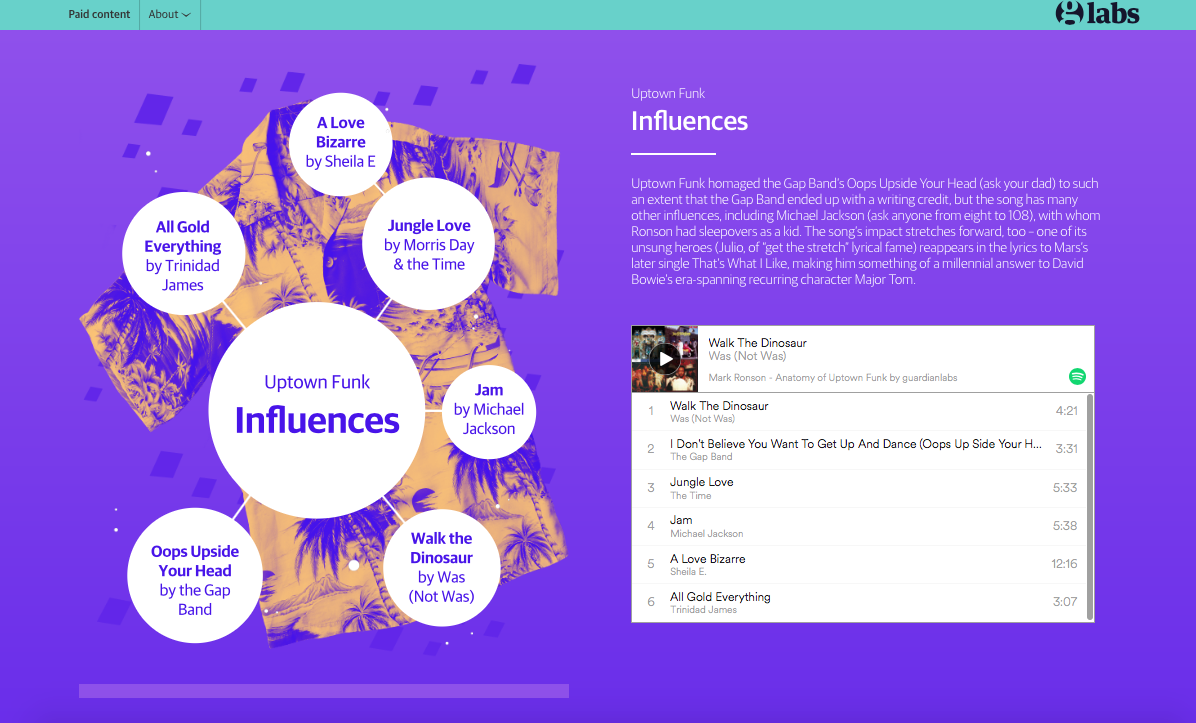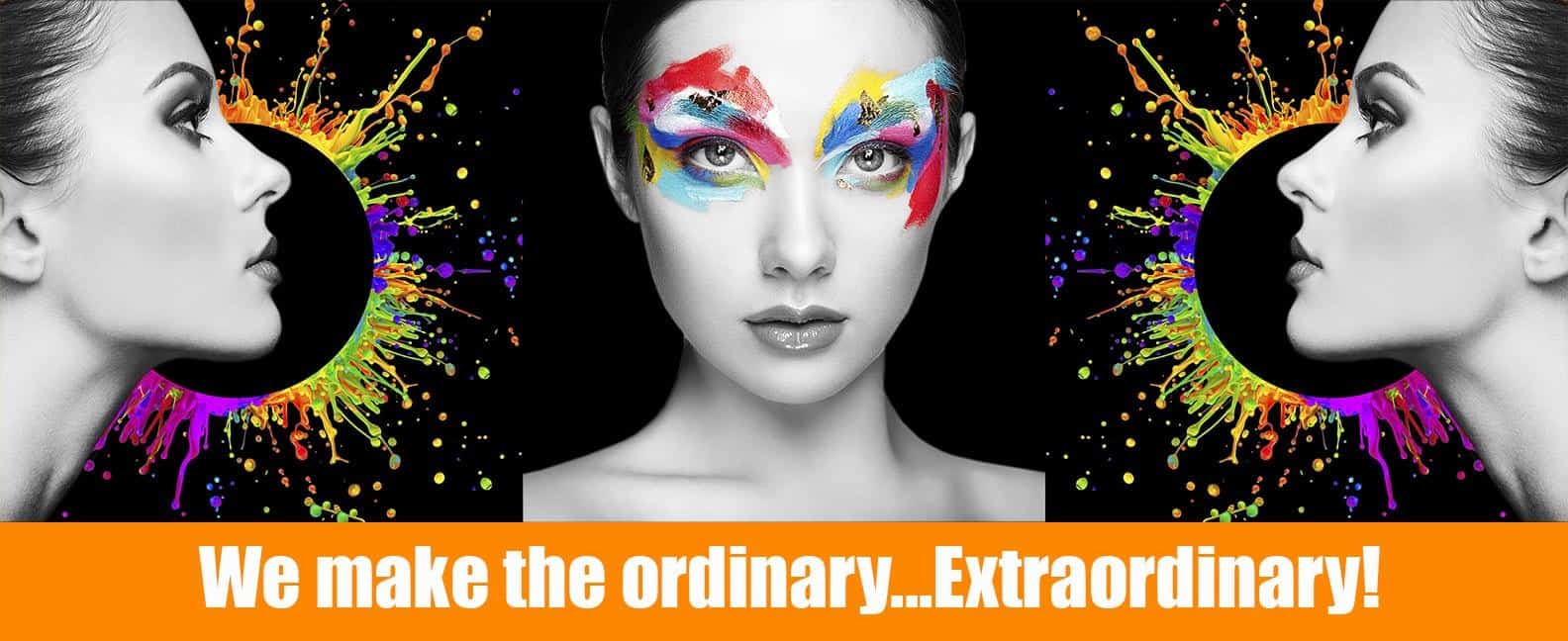How Publishers and Brands Are Reinventing Immersive Visual Storytelling
Visual Storytelling: Publishers Place Their Bets
All over the world, publishers are investing in the creation of more visual content. In March of this year, CNN launched a virtual-reality division within CNN Digital that it’s touting as “a new immersive journalism unit.” Meanwhile, The Washington Post’s Raising Barriers: A New Age of Walls report became a crowning achievement for the newspaper, which used it as an opportunity to tell a story in a new way.
“I feel like we did it,” the company’s graphics director Kat Downs told Journalism.co.uk. “We finally created something that was not a text story with assets inside of it, or a video with a little bit of text written to it, but truly a story that depends on all of these pieces to communicate something.” The three-part investigative series combined text, video, and graphics, but rather than start with an editorial and harmonize with visuals, “visual storytelling was at the core of the newsgathering process,” Journalism.co.uk reported.
Integrating visual features in a way that truly enhances the story is increasingly important for newspapers, which compete in an incredibly crowded online space. Leading publishers like the New York Times, The Washington Post, The Wall Street Journal, and BuzzFeed publish hundreds of stories a day, and all are vying for consumer attention. As The New York Times points out in its report, digital storytelling tools like photography, maps, videos, and interactive graphics afford the ability to create “richer and more engaging journalism.”
Also at play is the “picture superiority effect.” Research has shown that humans remember pictures better than words. Data visualizations like those featured in the Raising Barriers story serve a dual purpose: They contribute additional information to the story, while also making it more memorable.
But Edward Hutchinson, acting labs director at Guardian Labs — the in-house agency that creates branded content for Guardian News and Media — warns that while having a surplus of options is exciting, “there are no cookie-cutter, one-size-fits-all rules” for how to tell visual stories effectively. Since its launch in 2014, Guardian Labs has created interactive and multimedia cross-platform stories for such brands as Lloyds Bank, HP, and Spotify, all of them unique. Spotify, for example, sponsored an interactive feature that integrated music with data-based graphic design.

“Whilst we should always be looking to be creative and exploratory, we should also be informed by the data we now have at our fingertips, and the instinct to understand what is best for the reader,” Hutchinson says. “If you know your audience, platform, are experts in your storytelling and have a clear strategy of what you want to achieve, you can work the use of imagery and method accordingly.”
For its part, the Times believes it needs to become “more comfortable” with its photographers, videographers, and graphics editors taking the reporting lead. It plans to ramp up its use of audio, video, and virtual reality as journalism formats. There’s no question that other publishers will follow suit.
Future-Proofing Marketing Content
“We adapt,” says Jessica Lehmann, associate director of strategy at global design agency Brand Union, when asked about the visual-storytelling trend. “Think back to the dawn of humans, people trying to communicate with hieroglyphics or beautiful frescos in churches. We have always tried to tell stories through visuals.”
For this reason, it isn’t just publishers that are maximizing the visual-storytelling opportunity, but marketers as well. Brand Union is doing everything it can to “future-proof” its work for brand clients, from incorporating interactive infographics that allow consumers to “find out something new with each click and scroll,” to virtual reality and artificial intelligence (AI). The most effective visual elements, she explains, are those that allow people to “become part of the content discovery process.”
That’s critical for marketers, because like publishers they need to bring their audience into the narrative and increase the amount of time users spend with their content. “Marketers want to communicate as much as they can in as short amount of time as possible,” Lehmann notes. That’s one of the reasons why so many brands and publishers are creating video content for Facebook. “Social media is where many people now get their news,” Lehmann says. “Brands must have video on Facebook, because that’s what people are used to now.”
Social-media analytics company Unmetric analyzed the effectiveness of branded video storytelling in 2016, and found that Facebook easily pull its weight as a platform for video content. While companies have previously relied on YouTube to distribute their videos, brands like Pillsbury, Cadbury, and Disneyland are now generating high levels of engagement on Facebook.
Publishers are hoping for those same results. Even as they incorporate audio, animated GIFs, and data-based illustrations into stories on their own properties, companies like CNN, Vox Media, and Mashable are creating video content for Facebook through a massive content deal designed to keep the social network’s “1.65 billion monthly users engaged.” According to The Wall Street Journal, these users watch about 100 million hours of video on Facebook every day.
“Video is obviously an important technique for storytelling at the moment,” says Hutchinson of Guardian Labs, adding that Guardian News and Media developed a shareable video format called DAB that’s “designed to meet an unmet consumer need: mobile video that can be watched, and read, without the sound on.” One such video, sponsored by UK-based car–shopping site SEAT, investigated the science behind romance just in time for Valentine’s Day this year.
Guardian Labs has also experimented with animation through films like Last Job on Earth and a branded film for conservation charity Woodland Trust. “Animation and illustration offer flexibility, speed, and are cost-effective compared to a big video production,” Hutchinson says. What’s more, he continues, is the format means tweaks can be made, at pace, without the need to spend huge amounts of budget.
Woodland Trust – The Guardian from Moth on Vimeo.
The Modern-Day Campfire: Telling Stories Live
Some of the content that publishers and brands are currently producing takes the form of live-streaming video, another storytelling format getting a lot of play. In 2015 and 2016, live-streaming video mobile apps Periscope (acquired by Twitter) and Meerkat were all the rage among marketers. While Meerkat was recently removed from Apple’s App Store so its creators could focus on a new project, it helped to generate interest in live video content from publishers and brands, ultimately paving the way for offerings from Facebook and Twitter, along with YouTube Live for mobile — a follow-up to YouTube’s existing live video feature.
Throw in Snapchat, which recently went public and is expected to be used by more than 70 million Americans this year, and there are plenty of channels through which to report the news and tell brand stories live. In a way, live video streams have become the modern-day campfire around which journalists, marketers, and consumers can gather to share tales of all kinds.
BuzzFeed has used Facebook Live to present two of its employees trying to blow up a watermelon by squeezing it with rubber bands. That live stream attracted 800,000 viewers, more than any previous Facebook Live video up to that point. Meanwhile, Dunkin’ Donuts took viewers behind the scenes to Dunkin Brands University, the company’s test kitchen and training facility, for Valentine’s Day 2016. The resulting video, which showcased a wedding cake made of heart-shaped donuts, has been watched more than 40,000 times to date.
Live video allows for more serious storytelling, too. Using streaming video platform Livestream, USA Today streams live events and political coverage to its audience’s mobile devices and streaming video box Roku. Reports suggest that 51 percent of the leading publishers used Facebook Live last September. But with Facebook Live now embroiled in controversy as multiple users have employed it to broadcast unspeakable acts, it’s possible many publishers and brands will hold off for now, adopting a wait-and-see strategy
VR: The Next Frontier
As evidenced by CNN’s recent investment in virtual reality, publishers are catching on to the value of this visual-storytelling tool and actively looking for ways to integrate it into their reporting. Credit The New York Times, which introduced its VR offering NYTVR in 2015 and has already created both documentary-style VR reports and branded films for the likes of MINI USA and GE.
Called the “ultimate empathy machine,” VR has the power to immerse viewers in a story. “Rather than being a fly on the wall, you’re up close and personal,” Lehmann says. “The gaps between technology and real life close, and you’re inside that experience.”
All of this allows journalists to tell stories in even more captivating ways. The Guardian’s latest virtual reality film, called First Impressions, takes its audience inside a baby’s first year of life by combining neural development and colour vision research with 360–degree video. A supplementary video and related article on the newspaper’s website complete the experience.
Trailer for First Impressions. Credit: The Guardian
“We’ve been early adopters of VR and have invested in our own VR studio, so we are ahead of the pack and well placed to capitalize on the interest and opportunities this new medium offers for storytelling,” Hutchinson says. “As VR tech improves and allows faster and cheaper production, I think we’ll see brands entering this space more consistently.”
Back in the U.S., GE’s new virtual reality five-part miniseries on science and innovation combines documentary filmmaking with branded content to educate and entertain GE’s target audience. “I think the industry is in a really interesting place where experience is becoming really paramount piece,” Alexa Christon, head of media innovations at GE, told Adweek. “Experience and experiential is becoming really paramount of how a brand shows up.”
As digital technology continues to evolve, telling stories that don’t just feature imagery, but also offer an immersive visual experience, will become a critical part of the content development process. Knowing the degree to which visual content stimulates and engages audiences, newspapers, media companies, and brands will be leading the charge.
“When it comes to marketing, will people move further away from words?” Lehmann wonders. “Potentially. To a certain extent, we already have.”



